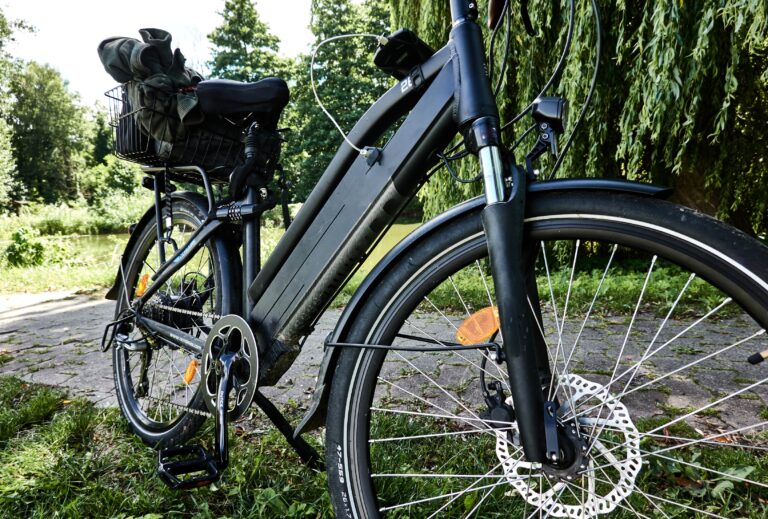Electric bikes (A.K.A e-bikes) are revolutionizing the way we think about cycling. By merging the reliable mechanics of traditional bicycles with the advanced technology of electric motors, e-bikes make cycling more accessible and enjoyable for everyone.
If you’re new to the concept of e-bikes, you’ve come to the right place. Throughout this guide, we explore what e-bikes are, unpack their key features, and discuss the broad spectrum of benefits they provide.
Ready to learn more? Let’s hit it…
What Is an E-Bike?
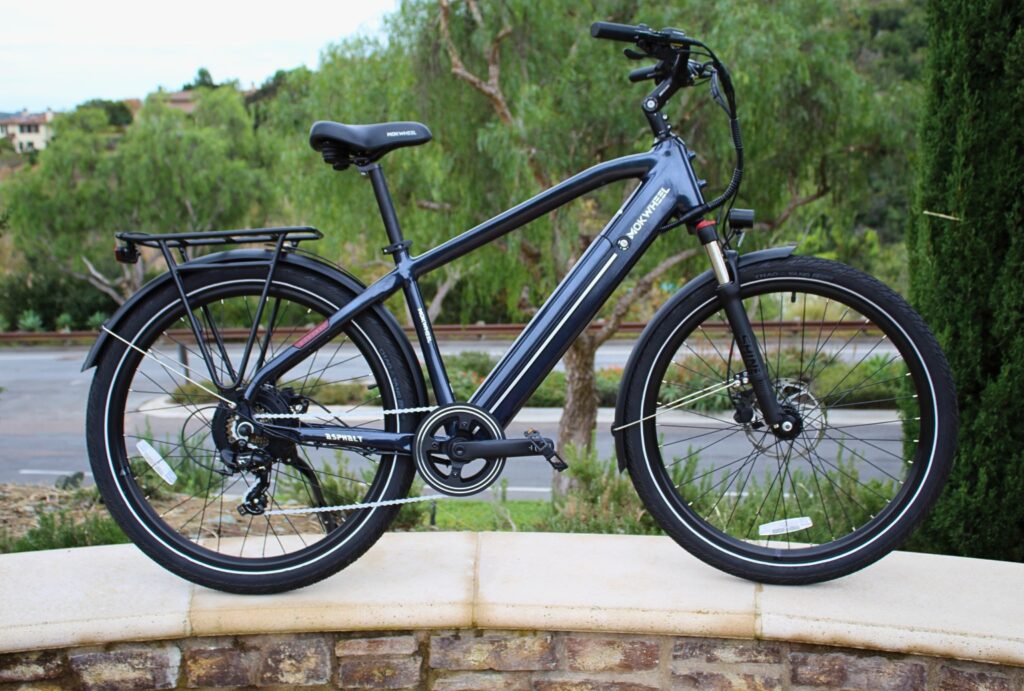
Simply put, an e-bike (short for electric bike) is a bicycle with a battery-powered motor activated through a pedal assist system (and sometimes a throttle). The resulting extra push makes the tough parts of your ride — like climbing hills, covering long distances, or even hauling cargo — much easier and less tiring.
Overall, e-bikes blend the benefits of traditional cycling with the convenience of motor-assisted travel, making them a versatile option for a wide range of riders.
Now, let’s take a look at some of the unique features that make an e-bike do what it does!
Key Components of an E-Bike
An e-bike is more than just a traditional bike with a motor slapped on the frame. It’s a blend of many core components that work together to strengthen your riding experience.
Motor
This is the part that boosts your pedaling power. E-bike motors are either mid-drive (located in the crank area) or hub-drive (situated in one of the wheels).
Generally speaking, mid-drive motors are ideal for balanced, versatile riding. They offer efficient power usage and weight distribution to help you tackle uneven terrain. On the other hand, hub-drive motors are typically simple, cost-effective, and easy to maintain. These motors excel on everyday flat, even rides.
Battery
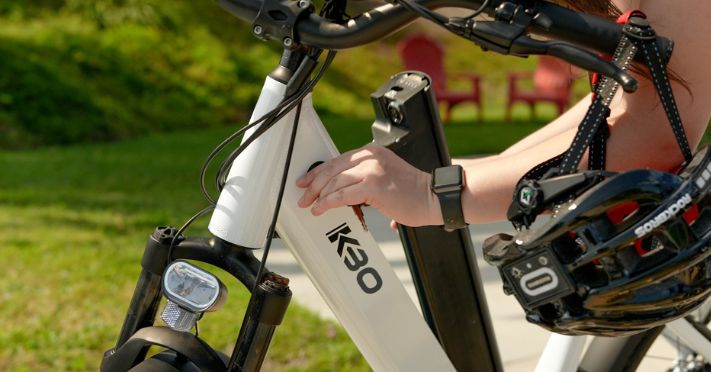
An e-bike battery is like its gas tank. It stores the electrical energy that powers the motor.
E-bike batteries are rechargeable, similar to smartphones, and have varying ranges. Manufacturers typically claim ranges between 30 and 60 mi (48-97 km), but the realistic range ultimately depends on how much help you need from the motor.
Pedal Assist System (PAS)
This system works with a sensor and tells the motor how much power to provide while you pedal. You can adjust the power boost level, usually between levels 1 and 5, so you get just the right amount of pedal assist.
Controller
Think of the controller as the e-bike’s brain. Based on your riding, it manages the power flow from the battery to the motor. The controller ensures a smoother ride by analyzing things like speed and selected PAS level and then adjusting the power accordingly. It also organizes power distribution to e-bike accessories, like headlights and taillights.
Display/Interface
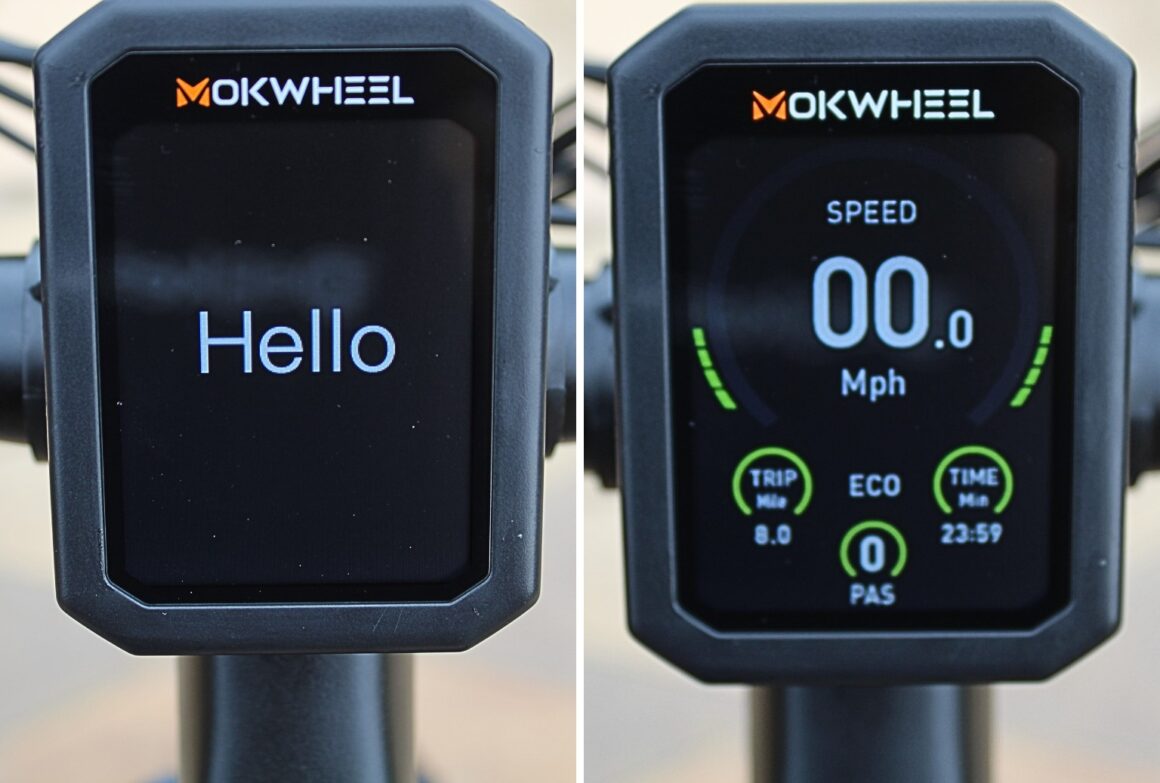
Almost every e-bike comes with a digital display or interface that acts as your dashboard. This screen provides important information like the remaining battery life, current speed, and selected pedal assist level. Some displays go even further, offering navigation, fitness tracking, and even the ability to connect to your smartphone for more features.
What's the Point of E-Bikes?
The main point of an e-bike is to help people get the most out of their ride by providing extra support when needed. E-bikes work for all types of riders but are downright transformative for those with limited mobility. And, thanks to the assistance you get from the bike’s motor, you can travel faster and cover greater distances.
Let’s take a quick look at how e-bikes stack up against other popular ways to get around:
- E-Bike vs. Traditional Bike: E-bikes enhance the classic cycling experience with pedal assistance (and sometimes a throttle), making them great for overcoming challenges like hills, rough terrain, and carrying passengers. While e-bikes are usually heavier due to the motor and battery, the assistance helps balance the extra weight.
- E-Bike vs. Motorcycle: E-bikes offer a quieter, more accessible ride than motorcycles and eliminate the need for a license or registration (in most areas). They’re generally more cost-effective and user-friendly — perfect for those seeking motorized transport without the complexity and maintenance of owning a motorcycle. Since e-bikes don’t use fossil fuels, they’re also the more ecofriendly option.
- E-Bike vs. Car: In urban settings, e-bikes outshine cars by helping avoid traffic jams and solving parking woes. Plus, you can store them in much smaller spaces — no garage needed (shoutout to folding e-bikes!). E-bikes are just as valuable for rural settings, doing what cars can and more! From carrying a passenger(s) to taking a long trip and overlanding, e-bikes are an environmentally friendly alternative that offers a healthy and economical way to travel.
What Are Some Other Benefits of an E-Bike?
E-bikes bring a multitude of benefits that make them a smart choice for all types of riders. Here’s how e-bikes stand out:
- Cost-Effectiveness: Not only are e-bikes typically more affordable to purchase than cars and motorcycles, but their maintenance and operational costs are also significantly lower. For example, our eBikes.org report showed that the annual cost to charge an e-bike totals approximately USD 21, heaps less than the USD 2,635 the average U.S. resident spends on gasoline yearly.
- Accessibility: E-bikes open up the world of cycling to a broader audience, from individuals recovering from injuries to hard-core mountain bikers. For example, the adjustable motor assistance allows limited-mobility riders to get a gentle workout without the strain of traditional biking. The same goes for speed demons and enduro riders. An e-bike can help push the limits beyond the traditional cycling experience.
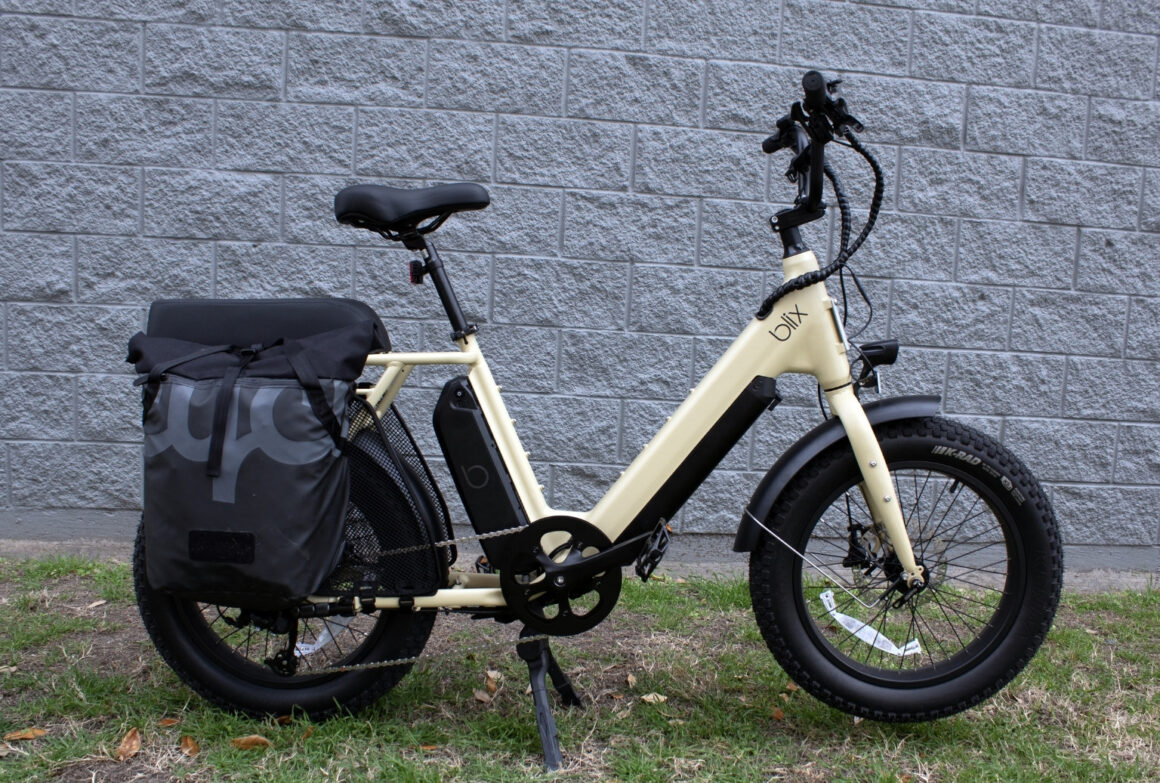
- Practicality: E-bikes are often designed to meet the needs of everyday life. Some e-bikes combine a motor with added cargo racks, making them perfect for running errands and transporting groceries, supplies, or even passengers. Other e-bikes include folding capabilities, making them practical for bus, train, and RV transport.
- Environmental Impact: Choosing an e-bike over a car reduces air pollution and greenhouse gas emissions. In fact, if we just look at the effect EVs have on the world’s oil reliance, electric two-wheelers alone displaced 60% of the oil demand in 2023, cutting daily oil consumption by over 1 million barrels. In other words, the more e-bikes hit the streets, the less oil we use and the less we pollute our air.
- Health Benefits: Although e-bikes provide pedal assistance, that doesn’t mean they’re useless for fitness-seekers. E-bike riders are still physically active. This movement improves cardiovascular health, boosts metabolism, and burns calories. On top of that, research on the health benefits of e-biking shows that regular use of an e-bike can help improve your mental health and reduce stress levels.

- Urban Efficiency: In crowded city environments, e-bikes offer a swift and efficient way to navigate traffic and avoid parking hassles. Because of their smaller size, e-bikes can go where cars can’t, reducing commute times and avoiding seemingly endless traffic jams.
FAQs About E-Bikes
You’ve got questions; we’ve got answers!
Do you have to pedal an e-bike?
Yes. If you didn’t have to pedal, it would be like riding a scooter or motorcycle. E-bike motors use a pedal assist system (PAS) that distributes power only when you pedal. Some models also include a throttle that can provide power without pedaling action. However, using only the throttle quickly wears out the battery — so expect to pedal most, if not all, of the time.
What’s the difference between an electric bike and an e-bike?
There’s no difference between an electric bike and an e-bike. Both refer to a bike with an electric motor that assists with pedaling and makes riding easier.
What’s the difference between an e-bike and a pedal-assist bike?
E-bikes and pedal-assist bikes are synonymous. Both terms refer to bicycles equipped with an electric motor that assists while you pedal. Now, some e-bikes also feature a throttle, providing motor power even without pedaling. But that’s in addition to the pedal assist system, which all e-bikes have.
How fast can e-bikes go?
This depends on the e-bike class. Class 1 and 2 e-bike motors assist up to 20 mph, while Class 3 motors can reach up to 28 mph. You can technically go faster without motor assistance (e.g., coasting downhill), but the motor will not assist beyond these speeds. Some out-of-class e-bikes can go much faster, but local regulations may limit their use.
What should I look for when buying an electric bike?
When choosing your perfect e-bike, first think about use and purpose. From cargo e-bikes to eMTBs, there’s an e-bike made for everything. You might also consider comfort, budget, battery certification, and range. Don’t forget to decide between a step-through and step-over frame design, and then think about any extra features (e.g., built-in lights, clear displays, or handy cargo racks).
Need help chiseling your list down to size? Use our free bike finder tool to get personalized recommendations from our experts.
E-Bikes: A New Era in Cycling
E-bikes have completely flipped the script on our cycling experiences, blending the classic charm of traditional bikes with a punch of electric power. They’re making city rides smoother and turning biking into a more inclusive activity for everyone, whether you’re a newbie or a seasoned cyclist.
As e-bike technology advances, expect even more innovative features that moth your daily commute and leisurely rides an absolute blast.
Ready to transform your ride? An e-bike might just be the next big adventure you’ve been waiting for. Sign up for our newsletter today and stay up-to-date on everything e-bikes!
